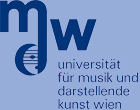List of Vienna Talk 2010 presenters

Amir, Noam
(P,O)Andermann, Martin
(P)Arzt, Andreas
(O)Bastos, Patricia Lopes
(P)Beauchamp, James Warren
(O,O)Bendl, Ingrid
(P)Bertsch, Matthias
(P)Bisesi, Erica Elisabetta
(O)Buen, Anders
(O)Campbell, Murray
(O)Cano, Estefania
(P)Carral, Sandra
(P)Carter, Stewart Arlen
(O)Chatziioannou, Vasileios
(P)Chick, John
(O)Curtit, Marthe
(O)Dalmont, Jean-Pierre
(O)Davidenkova, Ekaterina
(O)Demoucron, Matthias
(O)Doutaut, Vincent
(P)Dörfler, Monika
(O)Flossmann, Sebastian
(O)Fouilhe, Eric
(O)Fricke, Jobst P.
(O)Fritz, Claudia
(O)Gingras, Bruno
(O)Goebl, Werner
(P)Granzotto, Nicola
(P)Grosshauser, Tobias
(O)Guettler, Knut
(O)Hansen, Uwe J
(O)Kartofelev, Dmitri
(P)Kausel, Wilfried
(P)Kemp, Jonathan
(O,O)Klaus, Sabine Katharina
(O)Kostek, Bozena
(O)Lambrechts-Douillez, Jeannine
(O)Lohri, Angela
(P)Marchand, Sylvain
(O)Mayer, Alexander
(P)Moore, Thomas
(O,O)Morrison, Andrew
(O)Myers, Arnold
(O)Nederveen, Cornelis J
(O)Niedermayer, Bernhard
(O)Norman, Lisa
(O)Oehler, Michael
(O)Otcenasek, Zdenek
)Pyle, Robert W.
(O,O)Reuter, Christoph
(O)Richardson, Bernard
(P,O)Rose, Maria
(O)Presentation type: Oral
“He thought one of the parts was sung by a woman standing behind the instrument…”: Aesthetic perceptions of the eighteenth-century piano as a mediator between science and illusion
The list of terms referring to predecessors of the instrument known today in English simply as “piano” bears witness to the fact that terminology signifies more than physical description. It suggests a capacity to project illusion based on aesthetic perception rather than representation of the instrument’s acoustic properties. Among the terms used for the early piano “Hammerklavier” (clavecin à marteaux, hammer-harpsichord) is mechanically descriptive, while “piano-forte” (forte-piano) denotes the desired effect of dynamic contrast. The eventual dominance of the term “piano-forte” or “forte-piano” implies a preference for image over mechanics, for feeling over reason, or fantasy over reality. Rousseau, without any reference to the instrument, defined the term forte-piano in his 1768 dictionary as “the art of softening and strengthening the sounds in an imitative melody, just as one does in the spoken word.” Enlightenment practitioners portrayed instruments not as tools exclusively for the professionally trained, but as magic music-(re)producing machines for amateurs. The ability to project illusion was taken a step further when in the course of the eighteenth century the aesthetic concept of the piano as an instrument with dynamic contrast changed into that of an instrument that could sustain sounds based on vocal models. This paper investigates piano treatises, advertisements, and reports of newly invented instruments presented to the Académie Royale des Sciences in Paris. It demonstrates how in the case of the piano the tendency towards illusion was dictated by Enlightenment aesthetics, a view that provides a new perspective on historical performance practice and the replication of historical instruments.

Rossing, Thomas D.
(O,O)Sanchez, Monica
(P)Schoonderwaldt, Erwin
(O)Sharp, David
(O)Siddiq, Sadjad
(P)Skala, Jan
(P)Smith, Richard
(O)Sundberg, Johan
)Taylor, Crissman
(O)Tronchin, Lamberto
(O)Tsai, Pei Ju
(P)Vereecke, Hannes William
(P)Vergez, Christophe
(O)Widmer, Gerhard
(O)Worland, Randy
(O)Ziegenhals, Gunter
(O)van der Linden, Janet
(O)





